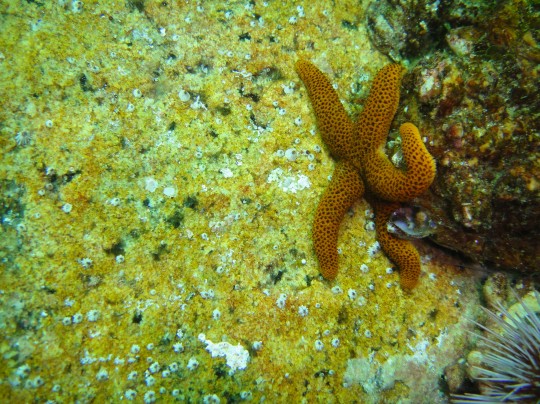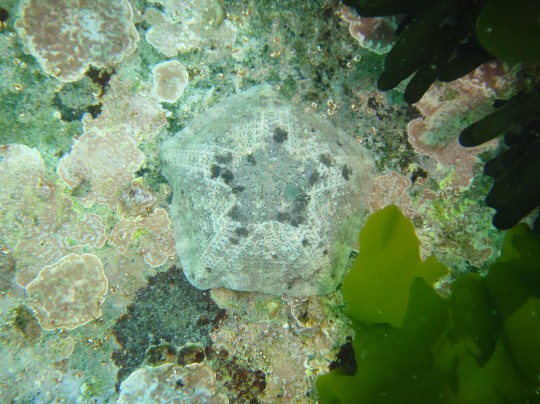One of my favourite things to see when I’m lying on the sand during a dive (waiting for Tony’s students to finish skills, for example) is a starfish making its way from one point to another. They don’t look like speedy movers, but they are – in this effortless gliding way that belies the fact that hundreds of little tube feet are working hard to get them where they want to go.

Like anemones, starfish have hydrostatic (comprised of water) skeletons. Their mouth is underneath, where their legs meet up, and they expel waste from the top of their bodies. They have what’s called a sieve plate, next to the anus, that they use to draw water into their bodies.

I didn’t know this until I started diving, but starfish don’t just stay as small as the little cushion stars you see in rockpools. We’ve seen ones as large as dinner plates, often in huge congregations like a social meeting. Windmill Beach is a particularly good place to see piles (literally) of starfish.


Starfish are pretty voracious eaters. For example, they like mussels, and will use constant steady pressure with their legs to force the mussel shell open a bit. Then they extrude their stomach (handy skill) into the mussel shell, and digest it in situ. Whenever you see a starfish hunched up over something, it’s eating. We have seen one trying to digest a tennis ball at Long Beach… Poor guy!


The rumours are true about starfish being able to survive if they lose legs. We’ve seen one with two legs lying in a gorgeous if slightly gruesome heart shape (our wedding starfish!), and one with six (I think sometimes the “regrow leg” gene goes a bit haywire and doesn’t know when to stop).

There are a few starfish varieties to see in Cape Town, and worth a look, even though they might seem boring and common…








One thought on “Sea life: Starfish”
Comments are closed.